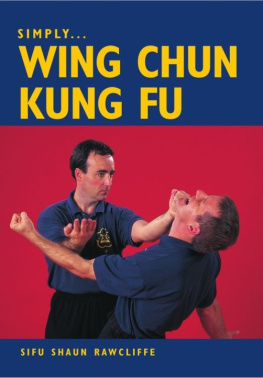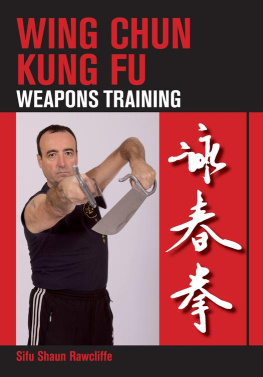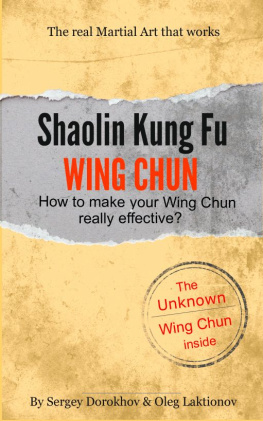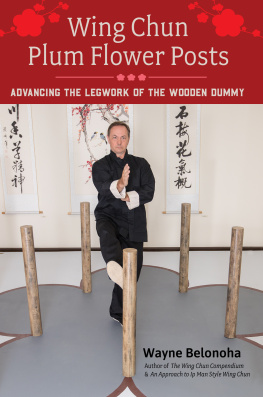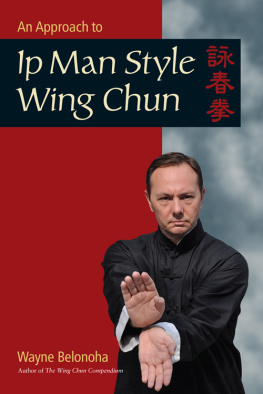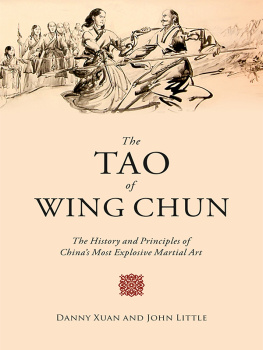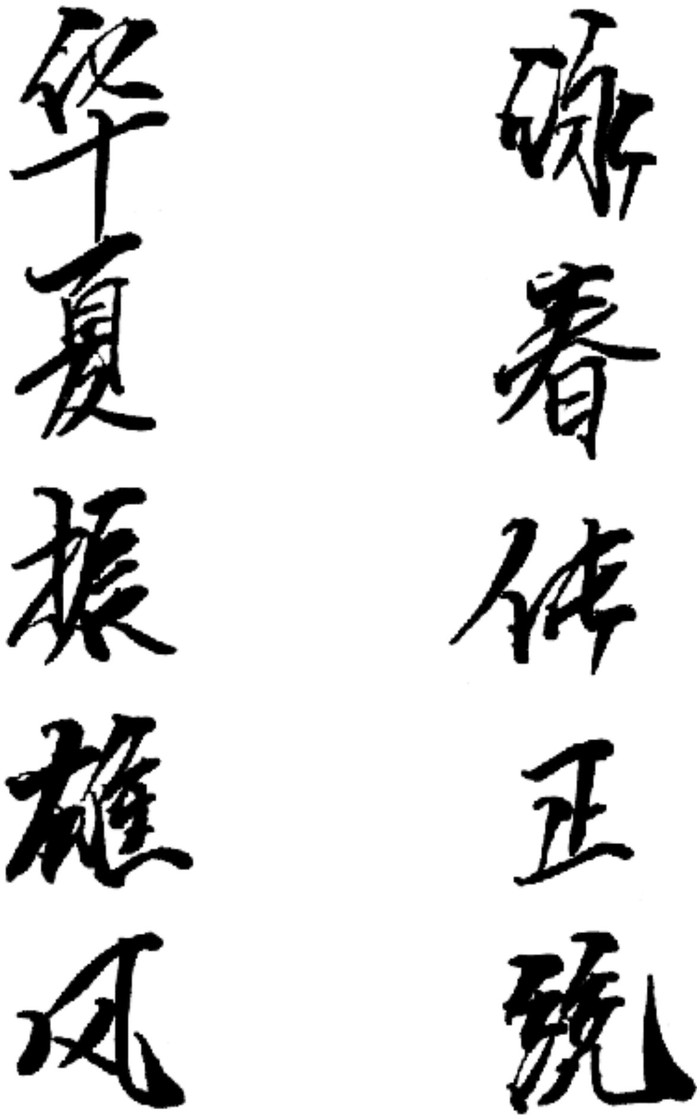Wing Chun passing down the traditional way, making the whole nation stronger.
First published in 2003
by The Crowood Press Ltd,
Ramsbury, Marlborough,
Wiltshire, SN8 2HR
www.crowood.com
This e-book edition first published in 2012
Shaun Rawcliffe 2003
All rights reserved. This e-book is copyright material and must not be copied, reproduced, transferred, distributed, leased, licensed or publicly performed or used in any way except as specifically permitted in writing by the publishers, as allowed under the terms and conditions under which it was purchased or as strictly permitted by applicable copyright law. Any unauthorised distribution or use of this text may be a direct infringement of the authors and publishers rights, and those responsible may be liable in law accordingly.
ISBN 978 1 84797 436 5
Note
Throughout this book he, him, his, etc, have been used as neutral pronouns and as such refer to both males and females.
As the editor of three of the worlds leading martial arts publications, I come into contact with thousands of martial arts practitioners on a daily basis. I regularly feature, communicate with, and profile, many of the worlds greatest names in our industry, which makes me one of the luckiest people alive today! In my thirty something years of being involved in martial arts, I can quite honestly say that I have come to know only a few people whom I respect on a personal level. Shaun Rawcliffe, the author of this book, is one of those people. Having almost pushed Shaun into the situation of having to write a book, I feel somewhat responsible for the outcome, although the knowledge that Shaun has amassed over the years will, as I am sure you will discover, make it well worth the read. Shaun is one of Wing Chuns pioneers, and the product of thousands of hours spent training with Master Ip Chun, the eldest son of Wing Chuns grandmaster Ip Man.
Shauns knowledge is the result of being a student: of training in small darkened halls, of dreaming of perfecting technique but above all it is the outcome of his thirst and passion for a total understanding. In fact, I believe this book should be called Total Wing Chun Kung Fu, rather than Simply Wing Chun Kung Fu, because this is how I refer to Shaun when attempting to describe him. I know that you will enjoy his book, and will probably want to train with him, so I urge anyone with a genuine interest in genuine Wing Chun to both read the book and make the call you wont be disappointed.
There are many martial arts practitioners today who purport to have the answers, but what sets Shaun apart is the fact that he still has questions. Moreover, his tenacity and eternal search for perfection are another two qualities which, when combined with humility and deep understanding, make him a modern-day master.
I hope that you come to regard this book as I do Shauns friendship: a valuable commodity in todays society.
Paul Clifton
Editor of Combat, Traditional Karate,
Taekwondo and Korean Martial Arts
I first met Shaun back in June 1985 in Leeds, where I held my very first seminar in the UK. At the time I was aware that he was already teaching Wing Chun in Birmingham, but when I practised Chi Sau with him, I found that his arms were quite tensed and that he used a lot of physical strength. In 1986 he invited me to his home to practise Chi Sau, but I found that his Wing Chun was still making little progress. He was keen to find out why no progress was being made, and asked: What should I do to improve? My reply to him was: First, you must relax. Only use energy when you need to, and dont use energy when you dont need to.
Two to three years later, when he first came to Hong Kong to study with me, I found that he had managed to appreciate the meaning and importance of relaxation, both in his teaching and practice. As a result his Wing Chun had improved dramatically, to a point where he seemed to be a totally different person to the one I had met in 1985.
I have conducted nearly 200 seminars over the last eighteen years, all over the UK. During each seminar, based on my many years of learning and teaching Wing Chun, I have always stressed the importance of relaxation in Wing Chun and the correct use of energy. And every time I want to emphasize this point and its benefits, I will invariably use Shaun as a fine example.
Today Shaun has fully understood the importance of relaxation, added to the fact that he has over twenty-one years of teaching experience, I believe that he has gained an even deeper insight into, and understanding of, Wing Chun. In his book, he publicly shares his wealth of knowledge and insight, and I truly believe it will be of benefit to all Wing Chun practitioners. Thus it is well worth my wholehearted recommendation.
Ip Chun
Spring 2003, Hong Kong.
I wish to express my gratitude to all those who have had the patience to teach me and train with me, especially Sifu Brian Hook, who provided me with a good solid technical grounding, and Martin Brierley, who offered me the hands to train with, and has remained a good friend ever since. In addition , both Sifu Simon Lau and, later, Sifu Sam Kwok, spent time honing and guiding my skills. Sam in particular gave up many of his weekends to spend time with me practising and discussing the finer points of Wing Chun technique and energy, for which I shall always be grateful.
The one individual, however, who has had the greatest influence on my Wing Chun training and teaching, as well as on me as a person, is my Sifu and mentor, Ip Chun. He saw and drew out my potential, influenced my thinking, and directed my approach to both training and teaching. His patience, humility, understanding and wisdom are an inspiration to myself and to all those who are fortunate enough to know and to train with him. He is truly a scholar and a gentleman. Ip Chun Sifu opened my eyes to Wing Chun training and teaching, and gave perspective, focus and meaning to my Wing Chun. In Sifu I found a mentor, teacher and friend who was willing to spend his free time practising and discussing Wing Chun during my frequent trips to his Hong Kong home. There are no words that can truly express my respect, admiration and thanks.
I would also like to thank his wife, Si-Mo, for accepting the many evenings I trained in their living room until late at night, and for providing me with many needed cups of Chinese tea.
In my years of training and teaching Wing Chun I have been fortunate to have met and discussed Wing Chun with numerous Wing Chun Sifus, including Ip Ching, Wong Shun Leung, Chu Shong Tin, Lok Yiu, William Cheung and many others. I thank you all, and apologize for those whom I have not named, but all your time and assistance will always be remembered.
The many hours I have spent discussing and practising with my Kung Fu brothers has assisted greatly in the development of my Wing Chun, particularly Lo Tak On (Raymond), Leung Cheung Wai, Ho Po Kai and Steve Cheung in Hong Kong, Yip Pui (Terence) in the USA, and Michael Tse and Colin Ward in the UK. However, there is one Kung Fu brother who has given up so much time to help me and has always been there for me, and that is my good friend, Leung Ting Kwok (Patrick): without your help and translations, I may never have developed the way I have. To you I am eternally grateful.
I have had the privilege to meet many people through Wing Chun far too many to mention them all, and for that I apologize but I would particularly like to thank one person who has been a good friend for many years, who has advised me many times, and who has been my sounding board on more issues than I care to remember: Mr Paul Clifton, editor of

